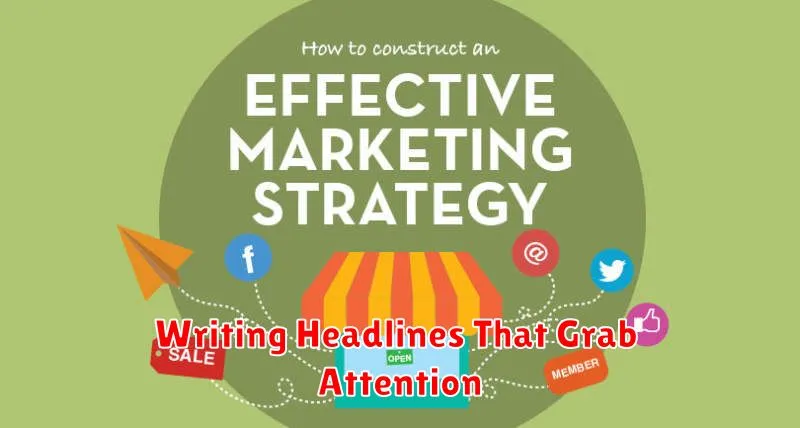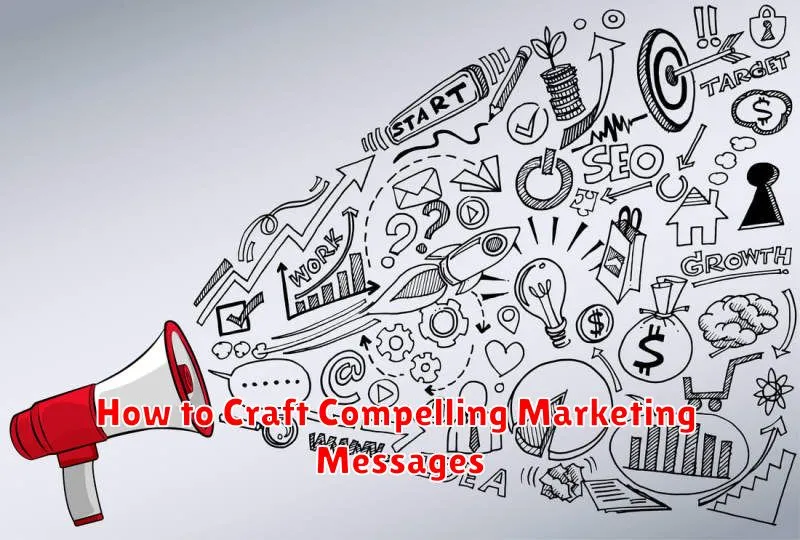In today’s saturated marketplace, crafting compelling marketing messages is more crucial than ever. Businesses must cut through the noise and resonate with their target audience to achieve desired results. This involves understanding your audience, identifying their needs, and developing messages that speak directly to them. Effective marketing messages not only grab attention but also drive action, whether it’s visiting a website, making a purchase, or signing up for a newsletter. This article will delve into the key strategies for creating compelling marketing messages that truly connect with your audience and drive conversions.
Learning how to craft compelling marketing messages is an essential skill for any marketer or business owner. From understanding your unique selling proposition to choosing the right channels and crafting impactful calls to action, the process requires careful planning and execution. This article will provide a comprehensive guide to developing effective marketing messages, covering topics such as identifying your target audience, choosing the right tone and language, and measuring the success of your campaigns. By mastering the art of crafting compelling marketing messages, you can elevate your brand, boost engagement, and ultimately achieve your marketing objectives.
Understanding Your Target Audience
Effective marketing messages resonate with the intended audience. This requires a deep understanding of who they are, their needs, and their motivations.
Start by defining your target audience’s demographics. This includes factors like age, gender, location, education level, and occupation. These data points provide a basic framework for understanding your audience’s characteristics.
Beyond demographics, delve into psychographics. Explore their values, interests, lifestyle choices, and attitudes. Understanding what motivates them and what challenges they face is crucial for crafting messages that truly connect.
Consider their online behavior. Which platforms do they frequent? What type of content do they engage with? Knowing where your audience spends their time online allows you to target your messages effectively.
Creating buyer personas can be a helpful tool. These semi-fictional representations of your ideal customers bring your target audience to life, making it easier to visualize and understand their needs and perspectives.
Crafting a Clear Value Proposition
A strong value proposition is the cornerstone of effective marketing. It succinctly communicates the unique benefit a product or service offers to a specific target audience. It answers the crucial question: “Why should I choose you?” A compelling value proposition differentiates your offering from competitors and clearly articulates the value customers receive.
Key elements of a compelling value proposition include:
- Clarity: Avoid jargon and technical terms. Use simple language that is easy for your target audience to understand.
- Specificity: Clearly define the tangible benefits customers will receive. Quantify these benefits whenever possible.
- Uniqueness: Highlight what sets your offering apart from the competition. What makes you the superior choice?
- Relevance: Directly address the needs and pain points of your target audience. Demonstrate how your product or service solves their problems.
Consider using a value proposition canvas to help you define your target customer’s profile and map your value proposition to their needs and pain points. This will ensure that your messaging resonates with your audience and motivates them to choose your product or service.
Writing Headlines That Grab Attention

Headlines are arguably the most crucial element of your marketing message. They are the first, and sometimes only, impression you make on a potential customer. A compelling headline can be the difference between a click and a dismissal.
Several techniques can elevate your headlines from mediocre to magnetic. One effective method is to incorporate strong numbers. Quantifiable results, such as “Increase Sales by 20%” or “5 Proven Strategies,” add credibility and pique interest.
Another powerful approach is to pose a question that resonates with your target audience’s pain points or aspirations. For example, “Struggling to Generate Leads?” or “Want to Double Your Productivity?” immediately engages the reader and invites them to learn more.
Creating a sense of urgency can also significantly impact a headline’s effectiveness. Phrases like “Limited-Time Offer” or “Don’t Miss Out” encourage immediate action, driving conversions.
Finally, ensure your headline accurately reflects the content that follows. Misleading headlines can damage your credibility and lead to customer dissatisfaction.
Using Emotions in Messaging
Emotions play a crucial role in how people process and respond to marketing messages. By tapping into specific emotions, you can create a deeper connection with your target audience and make your message more memorable and impactful.
Consider the core emotion you want to evoke. Do you want to inspire joy, excitement, nostalgia, or perhaps empathy? Understanding the desired emotional response will guide your messaging choices.
Word choice is key. Use vivid language and evocative imagery that resonates with the chosen emotion. For example, to evoke excitement, you might use words like “thrilling,” “unforgettable,” or “groundbreaking.”
Storytelling is a powerful tool for connecting with audiences on an emotional level. Share relatable anecdotes or testimonials that demonstrate the emotional benefits of your product or service.
Remember to be authentic in your emotional appeals. Consumers can quickly spot insincerity, which can damage your brand’s credibility. Focus on genuine emotions that align with your brand values and resonate with your target audience.
Testing and Optimizing Messages
Even with careful planning, your initial marketing message may not resonate perfectly with your target audience. Testing is crucial to refine and improve its effectiveness. A/B testing is a common method, where two versions of a message (with slight variations in wording, imagery, or call to action) are presented to different segments of your audience. Track key metrics such as click-through rates, conversion rates, and engagement to determine which version performs better.
Optimization is an ongoing process. Analyze the data from your tests and use the insights to refine your messaging. Consider the following elements for optimization:
- Headline: Does it clearly communicate the value proposition and grab attention?
- Body copy: Is it concise, persuasive, and easy to understand?
- Call to action: Is it clear, compelling, and easy to follow?
- Timing: Are you reaching your audience at the optimal time?
- Channel: Is the chosen platform the most effective for reaching your target audience?
By consistently testing and optimizing your messages, you can ensure they are as impactful as possible and drive the desired results.
Consistent Tone Across Channels
Maintaining a consistent tone of voice across all marketing channels is crucial for building a strong brand identity and fostering customer trust. Inconsistency can confuse your audience and dilute your message.
Consider your target audience and the overall message you want to convey. Are you aiming for a professional, friendly, or perhaps humorous tone? Documenting your brand’s voice guidelines can help maintain consistency.
Key elements to consider include:
- Language: Use similar vocabulary and sentence structure across platforms.
- Personality: Project the same brand personality whether it’s on social media, email, or your website.
- Imagery: While not covered in this section, visual elements should also align with your overall tone.
Regularly audit your marketing materials across different channels to ensure consistency. This will help solidify your brand image and create a more cohesive customer experience.

